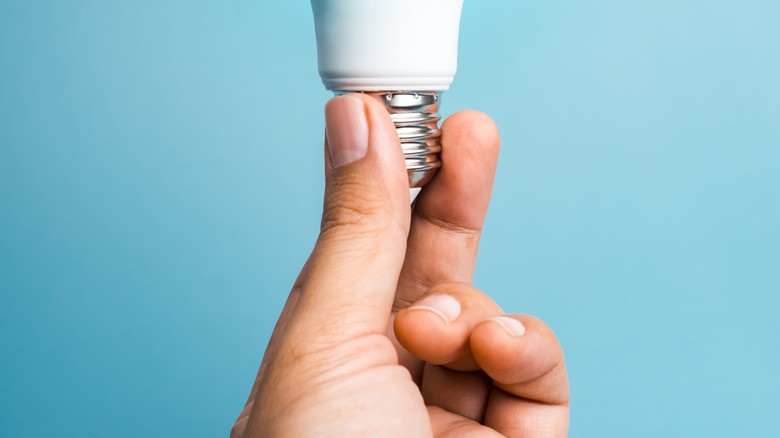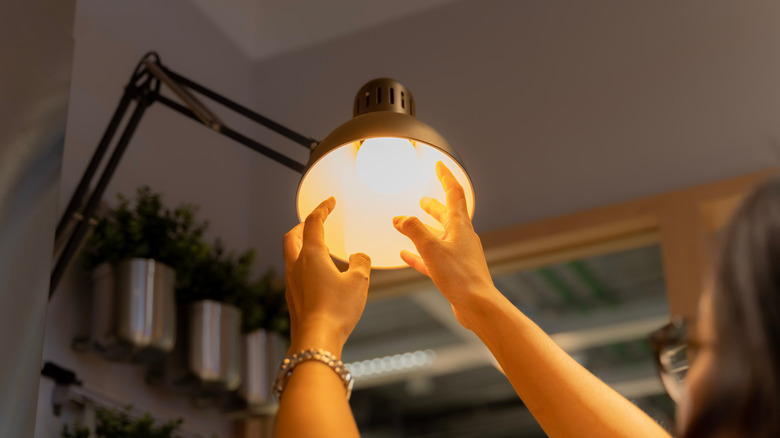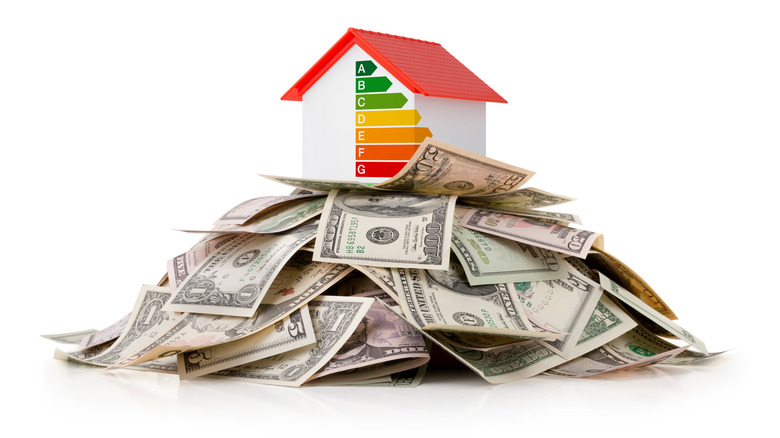What Does Kelvin Mean On An LED Bulb? Why It's Important, Explained
Light bulb technology has made great strides in recent decades, much to the benefit of the average consumer. Not only are they more cost-effective and longer-lasting in most cases than they were previously, but the emergence of LED bulbs brings in less environmental damage — in fact, LED bulbs can even be recycled and disposed of more responsibly — and energy efficiency. To top it all off, LED bulbs function in much the same way as traditional incandescent ones. Simply use them as necessary, and when they die out, unscrew them from their base and replace them. You can even safely use LEDs in incandescent or fluorescent fixtures.
Despite their user-friendly nature and plethora of positives, for some, there may still be some mystery surrounding LEDs. For instance, when looking at LED bulb packaging, one finds a measurement in Kelvin that isn't immediately explained. Fortunately, it's nothing too complicated, as it's just an explanation of the shade of white light the specific bulb will give off – known as the Correlated Color Temperature. The lower the Kelvin rating, the warmer and yellower the color will be, and the higher the Kelvin rating, the cooler and bluer it'll appear. The Kelvin scale ranges from 1,000 to 10,000 degrees Kelvin, with most LED bulbs residing within the 2,000K to 6,500K range.
The Kelvin rating of an LED bulb seems like a pretty innocuous, straightforward bit of information. In reality, it's important, as it can be quite helpful during the bulb purchasing process.
What specific Kelvin ratings simulate
Overall, the importance of an LED's Kelvin rating comes down to aesthetics. If you're in the market for a new box of bulbs, but you want to maintain a certain atmosphere in your bedroom, office, or other area, keeping the Kelvin scale in mind is a huge help. This way, you can opt for warm or cool lighting, or somewhere in-between the extremes. Those toward the center of the scale offer a more neutral color, so if visibility is more important than looks, such bulbs could be right for you. Of course, alternatively, with multi-use, color-changing LED smart lights, you can opt for pretty much any color temperature you wish.
Getting more specific, different Kelvin levels can simulate different light sources. On the low end are those at 2,000 Kelvin and below, which are closest to warm, yellow candlelight. Between 2,000 and 3,000 Kelvin appears similar, though provides a more washed out, less yellow look. In the middle are those between 3,100 and 4,500 Kelvin, providing white light that is best for, as mentioned, visibility. Moving up are 4,600 to 6,500 Kelvin bulbs that closely simulate daylight, and 6,500 Kelvin and up bulbs that are bluer and more appropriate for and are often found in commercial settings.
That's a lot of variation for one bulb type. One can't help but wonder, though, do different LED Kelvin levels have an impact on brightness or energy use?
Does Kelvin rating impact energy use?
First and foremost, it should be reiterated that Kelvin measurements in LED bulbs specifically pertain to the color of the light they give off. That's all, which means that, on a technical level, it doesn't impact the brightness of the bulb itself directly. It may appear that warmer or cooler bulbs differ in brightness, but in reality, this has nothing to do with Kelvin. Rather, light is measured in lumens, so if you want a specific level of brightness out of a bulb, that's the measurement you want to look out for. Don't be confused by the presence of wattage on bulb packaging either, as this is the energy needed for the bulb to operate, not how much light it gives off.
That brings us to the matter of energy use and costs. Seeing the increase or decrease in Kelvin levels from LED to LED might lead one to think they could have different impacts on your finances. As it turns out, this isn't anything to worry about. Kelvin values don't directly influence energy use. Not only do you want to look at wattage on this matter instead, but even considering LEDs in general if you haven't already is for your benefit. According to the United States Department of Energy, households using LED bulbs save approximately $225 per year on their energy costs.
In the grand scheme of LEDs and their specifications, Kelvin is merely an aesthetic measurement. If you want specific tones to your lighting, it's worth keeping in mind, but if you don't care, you could ignore it entirely if you so choose.


